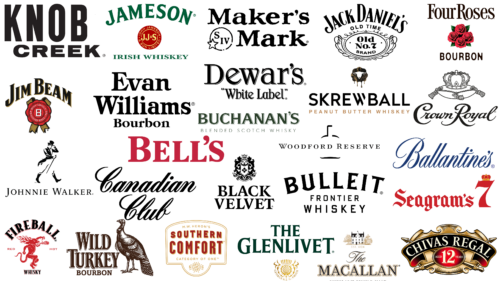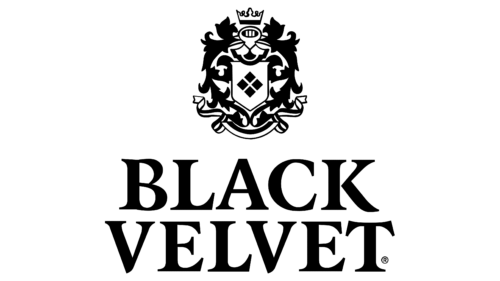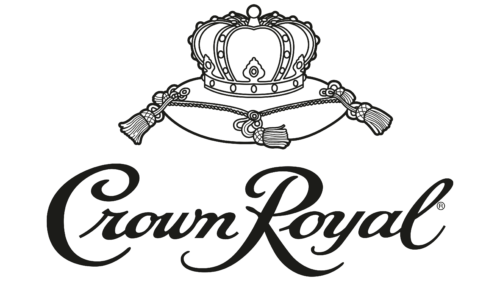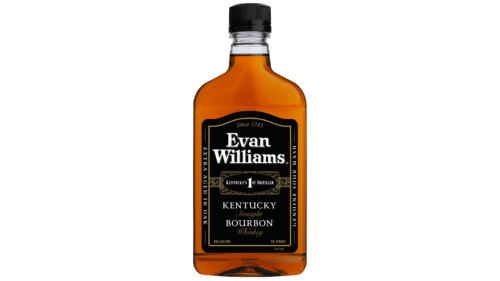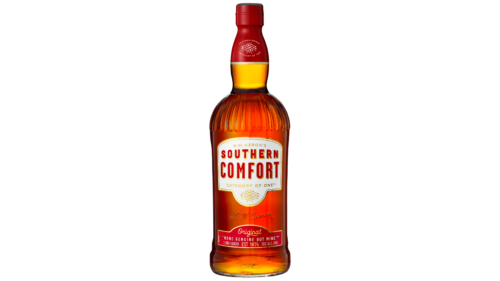Spirits have different names in different countries – whiskey, scotch, vodka, rum, brandy – but are invariably appreciated by those who have learned to make them. The main difference between spirits lies in the raw materials. For example, rum is made from molasses, while vodka is made from any fermentation product.
What is whiskey?
Whiskey is a drink obtained by distilling malted grains. Its main ingredients are rye, wheat, barley and corn.
The production process involves six steps:
- Germination and milling of the grains, called malting.
- Drying.
- Boiling into a thick liquid called wort.
- Adding yeast and fermentation.
- Distillation to produce pure alcohol.
- Aging for three or more years.
Among other 40-proof drinks, whiskey stands out for its rich flavor, which is achieved through different proportions of raw materials, additives, aging in charred barrels, and filtration methods. The finished drink has notes of dried fruit, honey, cinnamon, apples, citrus, and flowers. The aged spirits are characterized by chocolate, caramel, and woody tones.
Whisky is especially valued in America and Europe, which account for the largest share of sales. The best brands are produced in Great Britain, the USA and Japan. However, the main whisky-producing country is Scotland.
What is the history of whisky?
It is believed that the technology of whisky-making was discovered in the 15th century in Europe. At least, the first mentions of it refer to this period. Interestingly, it was the monks, despite the disapproving attitude of religion toward alcohol, who introduced the world to whiskey and most other fermented drinks. Its invention is attributed to Irish clergymen.
The properties of grain alcohol were considered therapeutic, and after the abolition of monasteries in the XVI century, it was sold in pharmacies for a long time. Gradually, the valuable drink became elite, available only to aristocrats. Commoners were forbidden to produce it, as a very high tax was imposed on alcohol. And to this day, whiskey is not available to everyone. The price for the most aged and famous brands can reach several hundred dollars.
The main law regulating the production of malt alcohol appeared in Great Britain in 1860. It defined the stages of technology that led to the development of distilleries and the emergence of high-quality and famous brands of whiskey.
What types of whiskey are there in classification?
Two main types of raw materials can be used for production:
- Malt – sprouted, processed, and milled grains. During this process, starch is converted into sugars ready for fermentation. The wort from the malted grains is distilled in a special apparatus (from one flask to another by heating). This product is called malt whisky.
- Grains are any ground seeds of cereals. Alcohol is obtained by repeated heating and condensation in large columns. The end product is called grain whiskey. It is of lower quality and is used in blends.
The following types of whisky are made from grain and malt whisky:
- – Single malt whiskies, which use malt whisky from a single distillery.
- – Single malt blends, which blend malt whiskies from different distilleries.
- – Blended whiskies, which include both malt whiskies and grain whiskies.
- – Pure grain whiskies from a single distillery.
- – Grain blends consisting of grain whiskies from different distilleries.
Elite single malts are considered bottled from a single cask. In this case, the label is labeled “single malt.” Fans of fortified alcohol can try undiluted whisky. Usually, after aging in barrels, it has a strength of 50-65 degrees and is diluted with clean water to 40 degrees. However, in some cases, it is bottled as is, labeled “cask strength.”
Types of American whiskey
American whiskey has an impressive variety of types, depending on the main raw material and the aging process. However, the most common spirits are based on rye and corn, which is due to the suitable climate for growing these crops.
- It imparts sweetness. Two types of whiskey are made from corn: bourbon (an exclusively American product made from 51% corn mash) and corn whiskey (80%). The former is aged in new charred oak barrels, which gives it a beautiful dark color and aroma. The second is a strong and pungent product, consumed immediately after distillation.
- Rye – Provides a spicy flavor. Rye distillate contains at least 51% rye malt. In the United States, this product is labeled as “rye whiskey.” However, many blends use rye as an additive, and the label may state “High Rye.”
- – Barley. Malt is responsible for a wide variety of flavor nuances. Scotch is made from barley. However, in the United States, at least 51% of this raw material is used, and in Scotland, the birthplace of real scotch, – 100%.
- – Wheat. Provides a smooth and floral flavor. Wheat is rarely used as the main ingredient. More often, it is used as an additive, as is rye. However, in some cases, you can find wheat whiskey with 51% grain content on the shelf. After the mandatory two-year aging in barrels, its strength is about 80 degrees.
By special markings on the bottle, you can determine what raw material was used.
Top Selling Whiskey in the USA
Ballantine’s
Distillery owner George Ballantine worked for more than 30 years to create a unique alcohol, mixing different types of spirits. The result is a blend of 49 grain and malt whiskeys that vary in aging and flavor. Such a flavor range can be tasted only in Ballantine’s line. The drinks of this brand are one of a kind. The recipe is complex and kept secret. Therefore, those who like this blend become lifelong customers and fans. It is not surprising that the brand ranks second in the world in terms of sales among Scotch whiskies. Its year of birth is considered to be 1869. The blended whiskies are produced at the company’s own distilleries, and the aging period ranges from 3 to 40 years.
The elegant inscription on the logo emphasizes the balanced taste and strict adherence to the proportions.
Bell’s Whiskey
A distinctive feature of this brand is blackcurrant and honey flavor. The drink is considered a calling card of Great Britain, so its logo depicts the national flag. The drink is named in honor of its creators – the Bell family. The year of the foundation of the brand is considered to be 1825, although, at that time, only a store was opened where the famous whisky was later sold. Arthur Bell created his masterpiece in 1863 after 12 years of experimentation. He patented his discovery and founded a blending company only shortly before his death.
Black Velvet Canadian Whiskey
After founding the distillery in 1933, the Gilby brothers immediately innovated in whisky production technology to make their drink stand out in the market. They applied triple filtration to blended spirits aged 5-8 years. The result was an unusual aristocratic smoothness worthy of kings. This feature is reflected in the name and logo of the whisky, which depicts a heraldic coat of arms.
Consumers appreciated the flavor, and by 1945, sales began to grow. Today, Black Velvet is the most consumed product in the United States. The two main types of the drink differ in aftertaste. The five-year-old blend has notes of citrus and sherbet, while the eight-year-old spirit has hints of roasted nuts and caramel.
Buchanan’s Scotch Whisky
The 15-year aging period puts this product in the category of elite – it is one of the five best Scottish blends. The composition includes malt and grain spirits with the addition of natural caramel, which gives the drink an amazing color and aroma. The creator of whisky started his career in winemaking quite late – almost at the age of 30. However, his persistence and passion for the process allowed him to open his own distillery and produce high-quality alcohol. James Buchanan’s products were appreciated by the British court and served at the table of the Japanese Emperor. Today, 1.5 million cases of whisky are sold annually, the recipe of which remains unchanged. A simple and elegant logo with layered lettering emphasizes that the product needs no special introduction.
Bulleit Bourbon Whiskey
The honey-smoke aroma of this rye-based drink is at once memorable and mesmerizing. That is why it is very popular in American bars and is a sales leader. It is believed that the creator of this alcohol was an innkeeper named Bullight, who founded the production in 1830. However, modern producers use a recipe from the innkeeper’s descendant that only remotely resembles the original. The founder did not return after transporting the goods, taking the recipe with him. In his memory, only a logo reminiscent of the innkeeper’s signboard remains. The richness and uniqueness of the flavor are due to the high content of rye raw materials and a long aging period of the spirit, up to 8 years.
Canadian Club Whiskey
Canadian Club Whisky is a classic Canadian drink based on rye. It was first produced by an immigrant from Detroit who founded a distillery in Windsor in 1858. Good aging and strength, as well as a rich aftertaste, distinguished whisky from other alcoholic beverages. However, the drink became the “face” of Canada internationally by accident. The creator planned to name his creation in honor of his part. But officials wanted all registered products made in Canada to bear his name. That’s how the brand became known as Canadian Club. The smooth lines of the logo indicate the smoothness and balance of flavor that customers like in the country of production and beyond.
Chivas Regal
The drink is named after the brothers who owned a delicatessen in Scotland, supplying even the royal court. In 1801, they added their own high-end whisky to the range, which was quickly appreciated by wealthy customers.
The brothers innovated at every stage of production, from a special blend for drying the malt to the unusual shape of the distillers. As a result, they received soft and flavorful alcohol, unlike any other brand.
In the Chivas line, special attention is paid to mixing spirits with the same aging period. The classic variant is 12, but there are also Chivas, 18, and even 25. The drink and its visual symbol convey the spirit of Scotland. The image on the logo of a heraldic shield with crossed peaks hints at royal regalia and the service of nobility.
Crown Royal Canadian Whisky
Crown Royal Canadian whisky is a truly royal drink. Its noble origin is evident in everything, from the amber-colored spirit bubbling in the vessel to the bottle design with the logo in the form of the monarch’s crown. This brand was truly made for the royal table. The distillery owner, Seagram, presented the bottle as a gift to King George IV.
To meet high standards, the whisky is prepared with special care and observance of all norms, and each bottle is packed in a velvet purple cover – a symbol of power and wealth.
The drink is a blend of 50 whiskies made from raw materials collected in different parts of Canada. The alcohol is filled with the color of the country and represents a wealth of flavors and aromas woven into a single bouquet.
Dewar’s
The appearance of this whisky dates back to 1846. The drink was not an exception and was named after the blender which worked on it. However, the approach to sales was innovative. The whisky was bottled in glass bottles with the author’s signature and sold by a traveling salesman. This “hands-on” approach made the alcohol popular.
Subsequently, the quality of alcohol was appreciated, and it began to be actively bought first in Great Britain, then in Europe, and, finally, in America. It cannot be said that Dewar’s whisky was distinguished by any unique or characteristic taste qualities. It was just good whisky. However, the owner’s ability to sell the product helped to increase demand.
The sons of the company’s founder used every possible method, from hiring actors who would walk into bars and demand Dewar’s whiskey, making a scene when they didn’t get it, to musicians who would draw customers to outlets.
Today, such marketing techniques are no longer necessary – the brand is known everywhere. Each bottle is distinguished by a memorable logo with a unique design.
Evan Williams Bourbon Whiskey
The light, marmalade-vanilla bourbon is named after the famous Irish social and political activist who had a passion for distilling spirits. His blend of corn, wheat, and malt became a popular whiskey produced in Kentucky. Emigrating to the United States, Williams opened a distillery in 1783. Initially, the winemaker wanted to use technologies common in Ireland but later adapted them to local raw materials. Today, the brand is considered a classic bourbon. Everything – from the logo to the packaging – speaks of the American roots of this drink.
Fireball Cinnamon Whisky
Fireball Cinnamon is not really a whiskey. It is a whisky-based liqueur from Canadian producer Sazerac with a strength of 33 degrees. It tastes like candy with cinnamon added. The recipe was developed at the end of the XX century, but until the current owner acquired the technology, the alcohol was little known. After the name change and a new approach to advertising, the popularity of the spirit has skyrocketed. In just two years, from 2011 to 2013, sales grew from $2 million to $61 million. Liquor is consumed with or without ice and used in cocktails. It has a hot, burning, and spicy flavor that warms and improves circulation. No wonder the logo depicts a fire-breathing dragon in mid-jump. This is exactly the feeling you get after the first sip of the drink.
Four Roses Bourbon
The beautiful legend associated with the name of this whisky attracts potential buyers, and the pleasant taste turns them into regular customers. Once, an ardent young man fell in love with a beautiful girl. She was capricious and did not pay attention to his suffering. However, after persistent courtship, she still agreed to dance with him at a ball on one condition: the lover had to weave a belt of roses and present it to her at the party. The young man wove it and, for four days, replaced the wilted roses so that the jewelry looked fresh and beautiful at the ball. This act caught the attention of his beloved, and he eventually married her.
Some claim that this story is linked to the brand’s owner, Paul Jones, who bought the formula from the drink’s creator, Rufus Rose, and made the whiskey popular. However, this legend was just a marketing ploy, as the name of the drink most likely came from the founder’s surname, and the number “four” symbolized four family members (Rufus and his three sons).
The drink’s logo shows four beautiful flowers arranged symmetrically, which emphasizes the harmony of the taste. The multifaceted shades of the whisky are achieved thanks to five years of aging in cellars at a constant temperature.
Jack Daniel’s Tennessee Whiskey
The name of this famous whiskey is also associated with a real person. Interestingly, Jack Daniel was not the founder of the brand, but he put his heart and years into its development and formation. Therefore, the choice is well justified. As a poor orphan at the age of 13, he acquired incredible wealth when the priest he worked for handed over the entire business to him so he could focus on spiritual matters.
Jack didn’t hesitate and ran the business so well that he fully justified the giver’s choice. He moved the business to a more favorable area, registered the distillery in accordance with all laws, conducted marketing campaigns, and improved the filtration process. His young and flexible mind allowed him to come up with unprecedented sales techniques, such as commemorative editions. All his efforts and hard work led to the fact that 40 years later, at the World Whisky Exhibition, Jack Daniel was recognized as the best whisky in the world. Subsequently, the brand received this title six more times. This event is reflected in the brand’s logo, which reads: “Old No.7”.
The use of the purest water from a Tennessee spring gives the drink an enhanced smoothness. Whiskey is often referred to as Tennessee whiskey because of its unique, distinctive flavor. One of the main features of production is filtration through an impressive three-meter layer of sugar maple charcoal. In addition to the usual blend, there are variations with honey and cinnamon.
Jameson Irish Whiskey
Jameson whiskey has been produced for 240 years. The wax seal on the logo immortalizes the name of the first distillery and the surnames of the creators of the drink: John Jameson & Son. The company controls all stages – from growing raw materials to bottling. The brand combines rich experience and tradition, which is reflected in its premium taste. Among Irish whiskeys, it is the No. 1 drink. It has been awarded more than 20 gold and silver medals. The main feature is triple distillation, thanks to which an increased smoothness with light aromatic notes is achieved.
Jim Beam Bourbon Whiskey
It is one of the best-selling brands of bourbon, with 40 million liters sold annually. The production of this elite drink began during the settlement of free Kentucky lands in the XVIII century and since then has been perfected over seven generations of the Beam family. Each representative made his own improvements and refinements. As a result, today’s famous whiskey has a much more pleasant taste than its first prototype.
The most important component is the yeast, which has been preserved and passed on to new batches for decades. Jim Beam developed them at the turn of the 19th and 20th centuries. That is why the family product was named in his honor.
In addition to a unique secret yeast recipe, the ingredients include corn (51%), rye and barley malt. The taste of the finished product is influenced by special water with high calcium content, double distillation, and long aging in charred barrels (4 years).
In addition to the classic, there are 17 more varieties of Jim Beam with the addition of juices and honey.
The whisky logo reflects pride in its past. In the center of the image is an award ribbon and a family seal, confirming the quality of the drink. The year of foundation, 1795, and reference to the patented formula are intended to convince the buyer of the whisky’s quality and the experience of its creators.
Johnnie Walker Scotch Whisky
The scotch logo shows the creator himself presenting his product to the customer. This is not Johnnie Walker, but his son Alexander, who was responsible for the creation and marketing of this drink. His striding figure on the emblem is a playful hint of the manufacturer’s last name. Today, there are many product lines of this brand, but the original recipe, consisting of four spirits from different regions of Scotland, remains the most sought-after and popular. It has a spicy, smoky flavor with a strength of 40 degrees.
Knob Creek Bourbon Whiskey
Another premium drink from the Beam family was introduced in 1992. Jim’s grandson developed the recipe based on the 1898 Penn-Maryland product. Despite the relative youth of the brand, connoisseurs immediately appreciated the resulting bourbon, thanks to its rich woody notes and beautiful amber color – the result of nine years of aging in charred barrels.
The name and composition are equally premium and notable. The 16th President of the United States grew up on Knob Creek Farm. The phrase is also used as a logo, which predicts the product’s popularity.
Maker’s Mark Bourbon Whisky
Maker’s Mark bourbon is as old as the Kentucky distillery where it is distilled. Of all the distilleries from the early 1800s, this is the only one that survives and continues to operate, rightfully bearing the title “a monument to U.S. history.”
In the early years, whiskey was produced in small batches and sold only in nearby villages. The modern Maker’s Mark, as fans know it, began to be actively sold in 1958, after the introduction of Prohibition. Red winter wheat is used in the production process. The strength of the bourbon reaches 45 degrees, which gives it a sharp, full-bodied flavor and a lingering aftertaste of oak and honey.
The whisky bottle is as unique as its bouquet – its design was developed by the distillery owner’s wife. Thanks to her, the logo with the letter S (Samuels’ surname) and the Roman numeral four was created. The last element is an accidental mistake, as according to the designer’s idea, it was supposed to symbolize the sixth generation of winemakers.
Seagram’s 7 Crown American Whiskey
There are two types of whisky with the same name. One is produced in America, the other in Canada. The first is a blended whiskey that is often used in cocktails. It contains 2/3 grain spirits, which accounts for the weak flavor. The sweet carbonation perfectly complements their pure alcoholic flavor. It is produced by the Diageo company.
The second is an elite drink with an herbal flavor, blended from bourbons aged for over a decade. The premium flavor is also reflected in the logo with the crowned seven.
Skrewball Peanut Butter Whiskey
This product has no analogs and is aimed at people following certain types of diets: vegan, keto, and gluten-free. However, those who follow a regular diet may also be interested in trying it. The inventors of the novelty, the Yeng couple, tested the drink in their own bar before the start of mass sales and received a lot of positive feedback. SKREWBALL is made of corn with the addition of oil, which gives the alcohol a rich flavor and oiliness.
Southern Comfort American Whisky
Southern Comfort is a 35 percent strength liqueur that has been made from whiskey since 1874. Its creator is a bartender from New Orleans, Martin Heron. In addition to whiskey, the drink contains honey, vanilla, lemon, orange, cherry, cloves, and cinnamon. All these ingredients create a very flavorful and sweet combination. Today, there are three varieties of this liqueur: 35, 40, and 50 proof, with different additives and whiskey accents. Although Geron no longer owns the production, his name and the uniqueness of the drink are immortalized in the logo, making it one of a kind.
The Glenlivet Scotch Whisky
A luxury single malt whisky with a multifaceted floral and fruity flavor that appeared at the dawn of the 19th century. The owner and creator of the brand faced threats from less successful entrepreneurs because of its unique flavor and distillery registration. However, he showed perseverance and brought his brand worldwide recognition. Even prohibition and wars could not prevent this from happening. Glenlivet lines are still produced according to the creator’s recipes; some of them even include spirits aged for many years from vintage stocks. The brand’s logo resembles a rare flower, suggesting that the whisky has a unique floral note.
The Macallan Scotch Whiskey
The word “single malt” immediately attracts the attention of connoisseurs and whisky lovers. Only real, high-quality alcohol falls under this label. In the aftertaste of this elite drink, you can feel fruits, spices, and coffee. However, Macallan was not always popular.
Production began on leased land in the early 19th century, and only in 1868 did the brand become the owner of its own distillery. Alcohol became a separate famous drink even later. For many years, Macallan was used to blend with other famous brands. Only in the 1950s did the composition begin to be distributed in separate bottles. In memory of the first steps to independence, the company’s logo depicts the estate where the land was rented for the production of whisky.
Wild Turkey Bourbon Whiskey
The name and turkey logo appeal to a male audience, emphasizing danger, guns, hunting, and prey. Wild Turkey whiskey pairs well with the game and is perfect for men’s outdoor recreation. The quality of the drink, conceived by the Ripi brothers for real men, is top-notch. The production follows the motto: “Twice as good”. Double distillation instead of single distillation, four years of aging instead of two. In addition, the collection includes various variants of classic and rye whisky. Therefore, the buyer will always find the right flavor for his mood and occasion.
Woodford Reserve Bourbon Whiskey
Who else can create a whisky with 200 flavor nuances but not a Scotsman? It was James Crowe who gave the world the famous noble drink used as a base for mint juleps.
Crowe was educated in chemistry in Edinburgh, which allowed him to make significant changes to the production process. The combination of corn and rye, cypress vats, limestone cellars, and sour mash are just a few of the secrets behind the birth of this unique drink. They have added new facets to the taste of whisky so appreciated by gourmets.
Questions and Answers
How to choose the right whiskey?
When heading to the store, decide on three main questions.
What type of whiskey do you need?
The most expensive and elite option is single malt. More affordable is a blended malt. Blended whiskey is the cheapest, but its quality is inferior to the previous two.
Which region’s drink are you interested in?
Your choice will directly affect the taste of the alcohol. Even with the same name, products from different countries differ in their production technology. In Ireland, for example, they prefer a triple distillation, while in Scotland, they opt for aging in barrels that previously held other spirits. There are authentic drinks created specifically in each region. So, if you want to try Scotch, choose a Scottish one, and if you’re interested in original bourbon, look for a product from the USA.
How many years of aging are you interested in?
The minimum for whiskey is considered to be three years. A young drink will have a strong alcoholic taste and almost no aromatic bouquet or aftertaste. If the alcohol is over-aged, it will become too bitter and viscous, losing its smokiness. Such transformations occur with Scotch at the threshold of 19 years and with bourbon at ten years. Aging ceases to count after bottling.
Once you have the bottle in your hands, visually assess its contents. The presence of sediment indicates that the drink was not filtered, and the whiskey’s taste will be richer.
How to drink whiskey properly?
Whiskey can be mixed with juice, water, and cola or consumed neat. The optimal temperature is 20 degrees Celsius (68 degrees Fahrenheit). A tulip-shaped glass is used for tasting. Pour a small amount into it and, by swirling, spread the aroma before taking small sips, enjoying the aftertaste.
How to drink bourbon properly?
Original bourbon is consumed undiluted. Young drinks can have ice added to smooth out the alcoholic taste. Aged spirits can be at room temperature. Fill a rocks glass 1/3 full. Hold each sip in your mouth for a moment to capture all flavor nuances.
